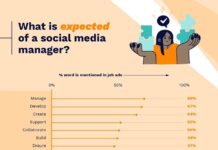When Congress became deadlocked over the extension of a payroll tax cut, The White House turned to social media to gain public support, asking followers “What does $40 mean to you?” The level of response was impressive, and a two-month extension was passed shortly after. How did the Twitter campaign work, and was it essential in achieving the final result?
The campaign began with a tweet from the @WhiteHouse account on Tuesday, December 20th, which asked “What does #40dollars mean to you?” The idea was to get the average American talking about what $40 dollars every two weeks means to them, and what they would lose if it was removed from their paychecks.
The campaign “blew up” after it was retweeted by the President’s @BarackObama Twitter account (with nearly 12 million followers), according to MediaBistro.
A blog post on WhiteHouse.gov also explained the campaign, and encouraged the public to submit their responses via the White House website, Twitter, Facebook or YouTube.
The results? The response was so huge that #40dollars was trending on Twitter for a few hours, with about 2,000 messages per hour coming in at its peak.
According to an analysis by Crimson Hexagon of 40,000 tweets with the #40dollars hashtag, the majority of responses were fairly positive and supported the campaign, ex. “#40dollars allows my son to have hot lunches at school”:
- 47% of tweets were about what $40 can buy
- 31% of tweets were about the need for tax cuts
Just 8% of tweets said that $40 “is not enough,” making it unclear whether those tweeters supported the campaign, as reported by Mashable. Finally, 13% of #40dollars tweets were negative, generally about Obama – for example, “@BarackObama is spending #40dollars every 15 seconds on his Hawaiian vacation.”
The #40dollars campaign was successful in producing the type of discussion – and response – that the White House was looking for, with both opponents and supporters speaking out under the hashtag, but overall sentiment leaning strongly towards support of the tax cut extension.
Is social media an effective way to influence and mobilize public opinion about political issues? How much influence do you think leveraging public support on a public forum (Twitter) had on the final decision made by Congress? Let us know in the comments below.
Update: “The campaign also generated 70,000 tweets, 46,000 submissions via the White House Web site, 10,000 related Facebook posts and contributions from 126,000 users.” (Washington Post)


